We tend to assume sweet potato plants only grow in certain soils or that they are generally harder to take care of than regular potato plants. And that stops many gardeners from trying their hand at growing them.
That’s a real shame. Sweet potatoes are not only surprisingly easy to grow but they are also a delicious treat. Much more so than regular potatoes!
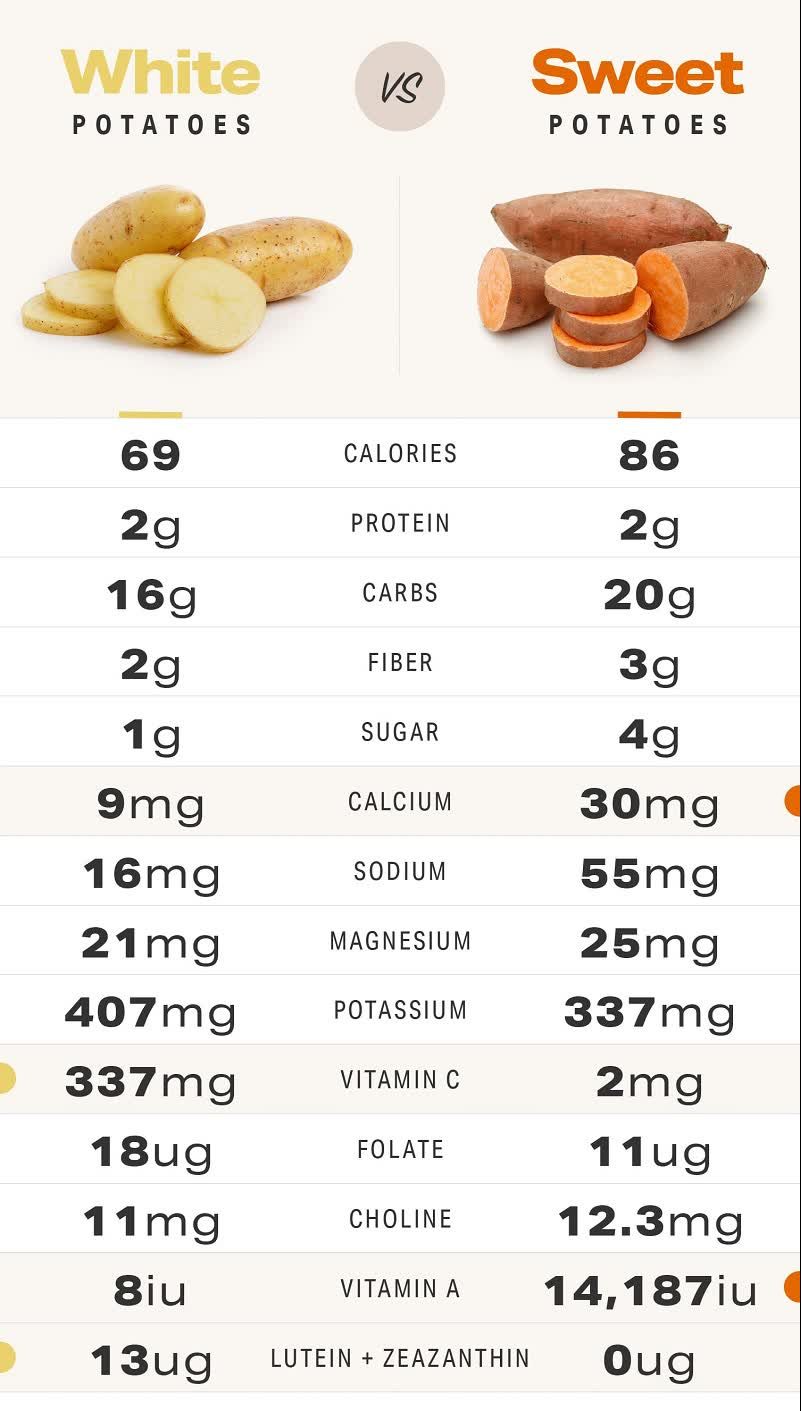
In this guide, we will share with you everything you need to know about growing sweet potatoes–the different types of sweet potato plants, how to plant and grow for them, and more.
Without further ado, let’s grow some sweet potatoes!
Varieties of Sweet Potatoes
If you’ve only rarely dealt with sweet potatoes (either in the garden or the kitchen), you might be under the impression that there’s only one type of “yam.” But that’s not the case.
There are several varieties of sweet potato plants out there. Let’s look at some of the most popular.
The Okinawa
Very popular in Hawaii, the Okinawa sweet potato is a one of a kind treat. What sets it apart from most other sweet potatoes is the vibrant purple color of the flesh inside, which draws a fascinating contrast with the off-white, light violet exterior.
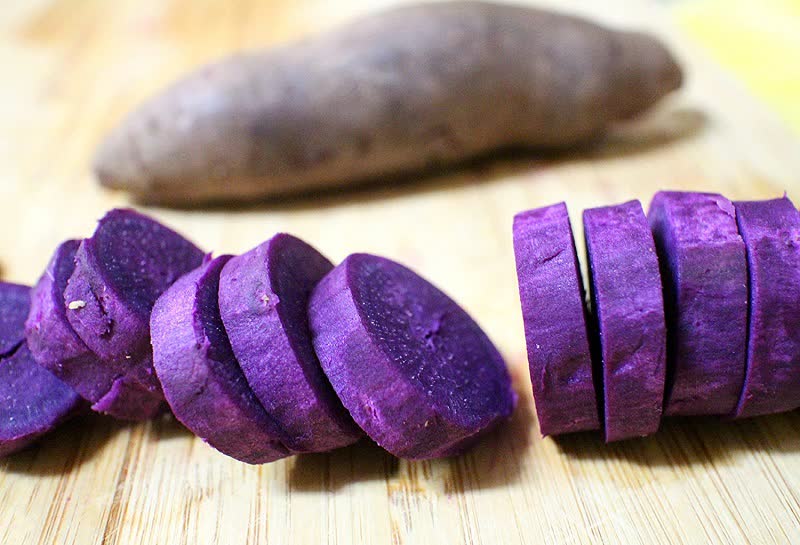
Despite their rich, bright color, Okinawa sweet potatoes are remarkably mild in taste. You can use them in a variety of salads or as a replacement for orange types of sweet potatoes.
The Jewel
The Jewel takes us on more familiar ground. This type of sweet potato is far more common. With a dull orange skin, Jewel sweet potatoes are quite versatile. Their flesh is a brighter orange and their taste is not overpoweringly sweet.
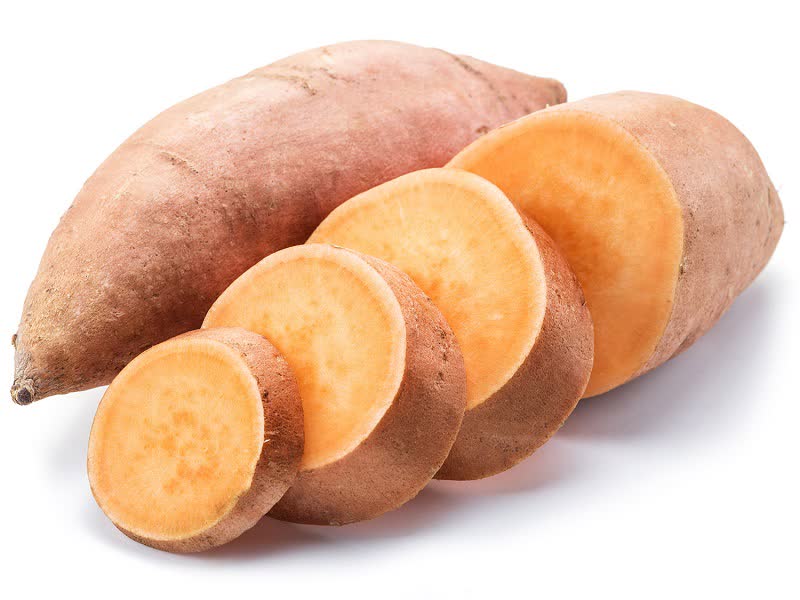
Tip: You can cook Jewel potatoes in many ways–mashed, boiled, roasted, baked.
The Bunch Porto Rico
The Bunch Porto Rico sweet potato plant is, by all accounts, a great option if you have a small garden. It doesn’t take up much space to grow.
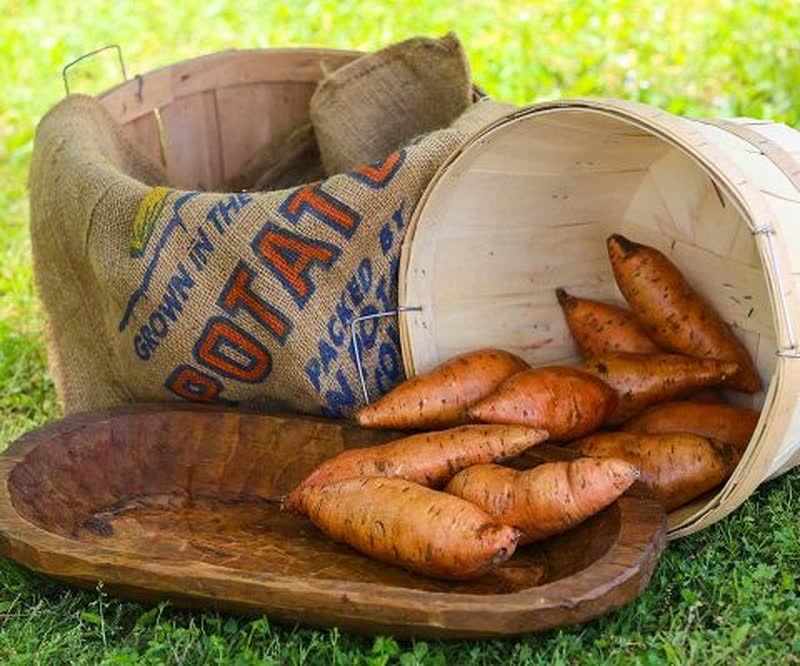
On the outside, the potatoes it produces have a rich copper color. On the inside, we’re greeted by a pinkish/yellowy flesh—and a pleasantly sweet taste!
The Hannah
A sweet potato plant with a long history, the Hannah looks remarkably like a ‘regular’ potato. It’s yellowy in color, both on the inside and the outside.
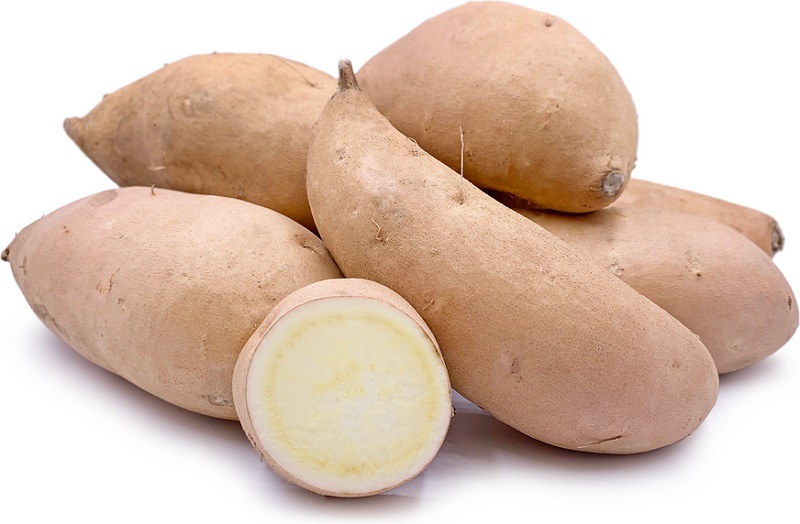
Tip: The Hannah is far denser than your average, orange-tinted sweet potato and does not work well as a replacement for it.
The Satsuma-Imo
As the name suggests, the Satsuma-Imo is a slightly exotic addition to the sweet potato family. It has a very dark purple skin but its flesh is yellow, just like common potatoes. Its taste, while sweeter than regular potatoes, is surprisingly mild.
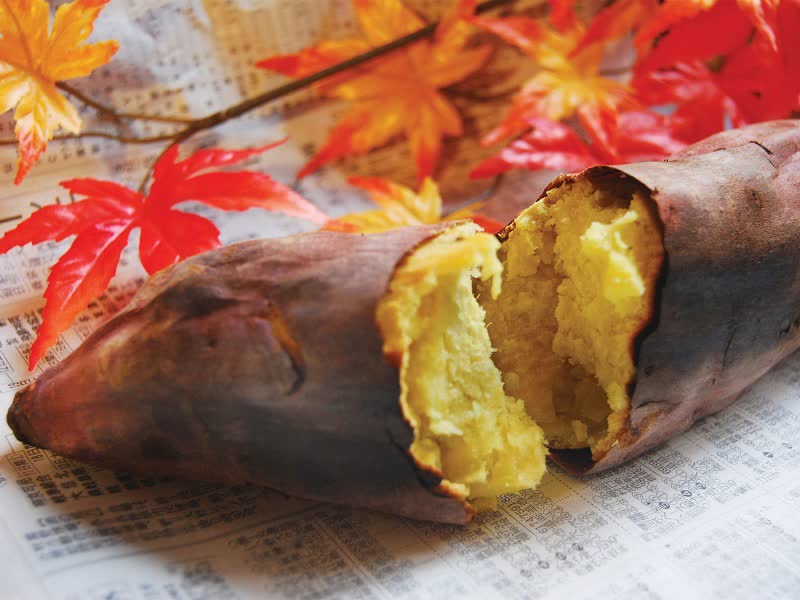
The Satsuma-Imo doesn’t usually become waterlogged, as many orange-y sweet potatoes do. But being far denser than your average sweet potato, it does not work as a substitute for them either. The Satsuma-Imo is its own thing.
The Beauregard
The Beauregard is the most common type of sweet potato and the one you’re most likely to see in stores. Its skin tends to be a dull reddish color (sometimes a little purple). Its bright, orange flesh has by far the sweetest taste of the bunch.
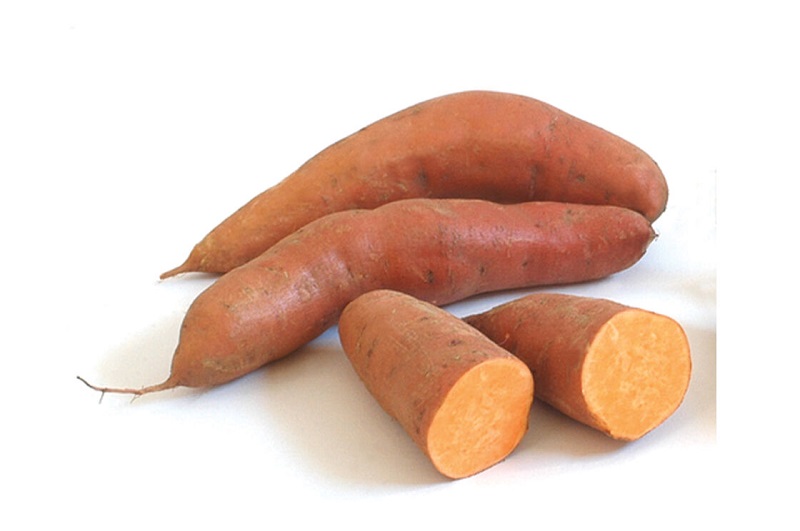
Tip: The Beauregard is not as dense as other sweet potatoes, which makes it easier to cook.
The Garnet
The Garnet has a bit of a peculiar skin, which makes it easily recognizable–its deep, orange-purple tint stands out pretty much anywhere. This type of sweet potato also has a distinctive, elongated shape.
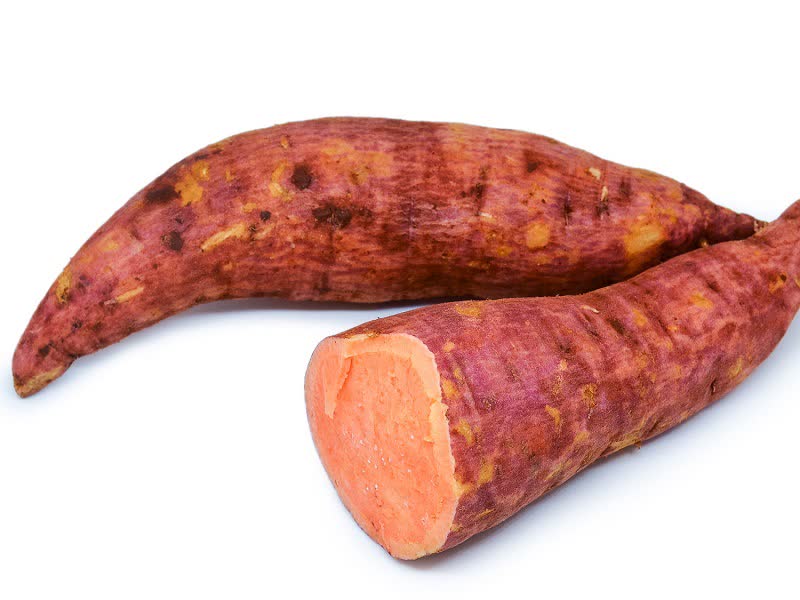
Inside, we find a deeply orange flesh that is easily one of the most flavored and sweet in existence. Also, the Garnet is exquisitely moist, which makes it much easier to cook than most types of sweet potato.
The Centennial
The Centennial sweet potato is another really common variety. On the inside, it looks remarkably like a carrot.
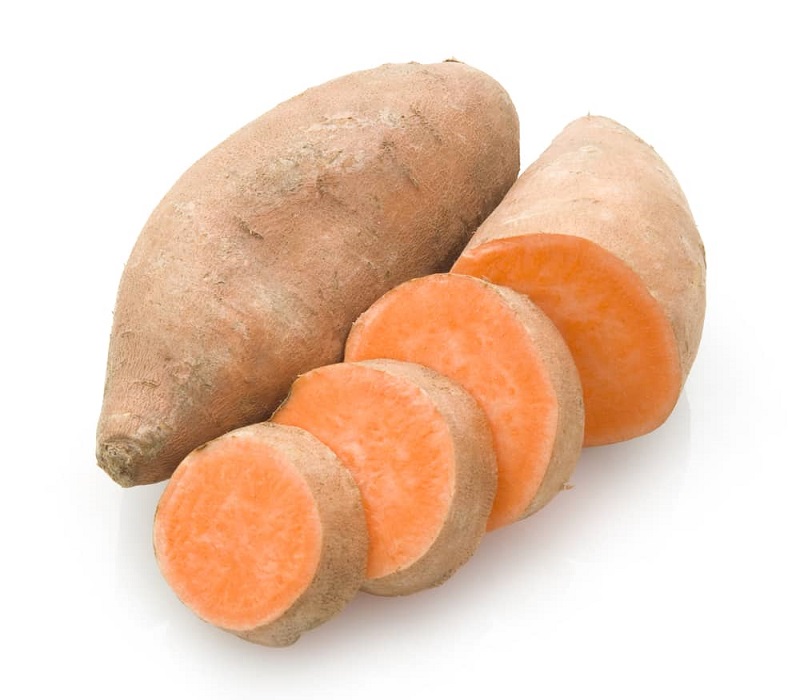
But don’t let that deceive you. Centennial sweet potatoes give a unique, sweet flavor to most dishes.
The Stokes
The Stokes sweet potato is tricky to identify because it’s so similar to the Okinawa. They share that bright purple interior and dull-colored exterior.
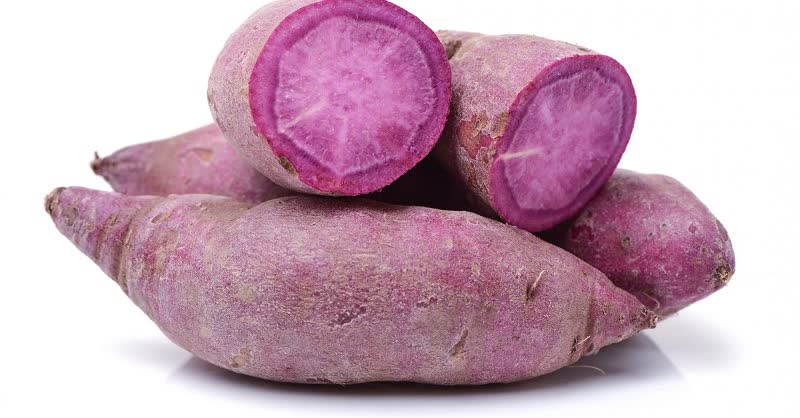
One way in which the Stokes potato stands out is through its health benefits. It’s remarkably rich in antioxidants, and so, an excellent addition to most meals.
The Vardaman
The Vardaman sweet potato stands out through its bright, orange flesh (almost bordering on red, sometimes).
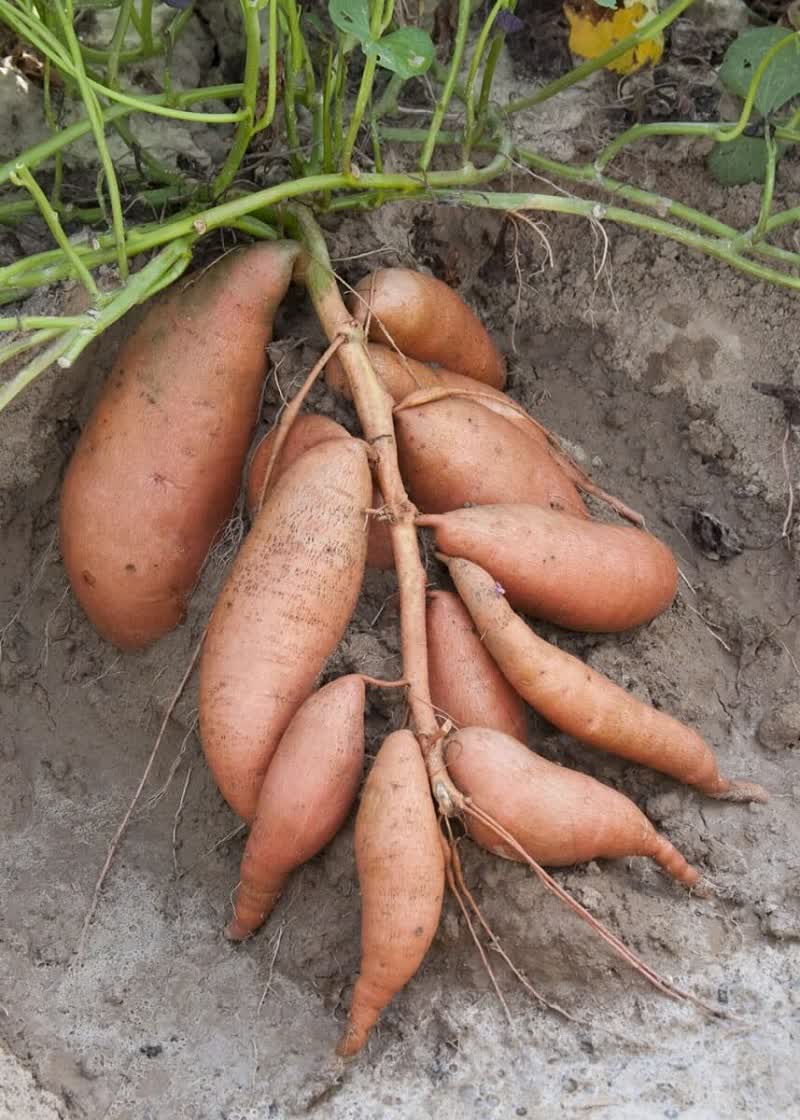
Delectably sweet, it’s another great option for people who don’t have a lot of space in their garden—this bush variety potato plant doesn’t need much.
How to Grow Sweet Potatoes
Ah, we’ve reached the tricky part. Just kidding! There’s nothing to be afraid of when planting sweet potatoes.
As we’ve seen, there are many varieties out there, appropriate for every type of soil and garden.
Step 1 – Assess your planting space
Just like when you’re furnishing a home, you need to be aware of the size of the space you’re working with. Otherwise, you risk planting a variety of sweet potato that’s too big for your space. So, figure out how much garden space you can dedicate to growing sweet potatoes.
Step 2 – Buy or Cut Some Sweet Potato Slips
Next, you want to buy the sweet potato slips. Sellers usually grow these from other stored sweet potatoes. You shouldn’t have any trouble finding slips for your chosen type of sweet potato.
Alternatively, you can grow sweet potato slips from an actual sweet potato of your desired variety. Simply slice the potato in two and let it sit on the planting soil for a while.
Here are some more tips on starting your own sweet potato slips.
Tip: If you’re new to all this, buying slips from the store is your best bet to growing sweet potato plants without any hassle.
Step 3 – Store the Slips
You may need to store the slips for a while before they’re ready for planting. Remember, if you plant them too early or too late, they may not grow properly.
Tip: Store sweet potato slips in an open space with plenty of light, at around 70°F (around 20°C).
Step 4 – Plant Them at the Right Time
Sweet potatoes need to spend quite a bit of time in the ground (between 90 and 170 days), so you’ll want to plant them in good time.
Sweet potatoes are very sensitive to frost. It’s best to plant them around 3-4 weeks after the last frost when the soil has had a little time to warm up.
Step 6 – Plant Them Right
You can either plant sweet potatoes in pots or straight in the ground. If using pots, make sure to get large ones (at least 1-gallon pots for every 2 slips or so).
If planting sweet potatoes in a pot: You want to ensure the pot has drainage holes at the bottom. Layer the pot with around 3-4 inches of mulch first, then cover the rest with fertile, planting soil.
Most people use planting pots as a preemptive measure, to give the sweet potato a ‘head start’ and protect it from the danger of frost.
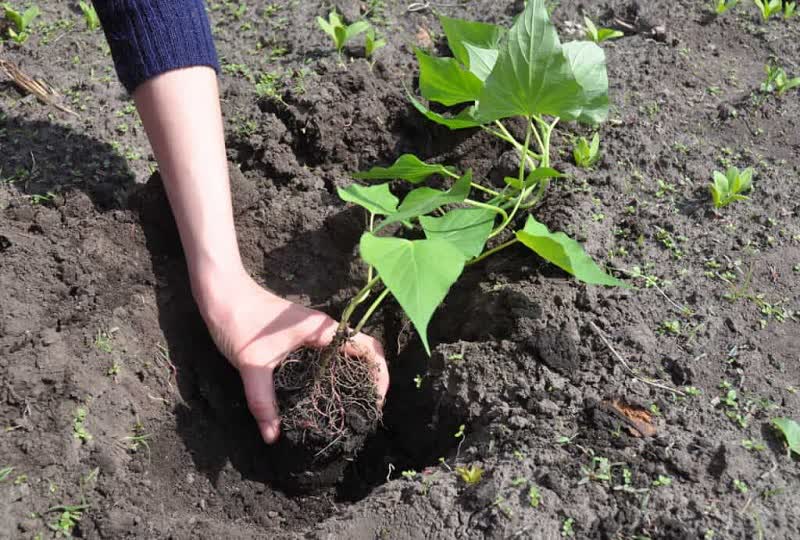
After this danger has passed, it’s good to move the sweet potato (should be around 6-12 inches tall now) to the outside.
Plant each strip about 6 inches deep and 12 inches apart from other slips, then cover with soil. Make little raised mounds where you’ve planted each slip.
Important: In the first few days, you’ll want to water sweet potato plants well to ensure that they root properly.
How to Care For Sweet Potato Plants
Next comes the growing part. Once again, don’t worry, it may sound difficult at first, but sweet potatoes are rather easy once you get the hang of them.
Light
Sweet potato plants like the light, so you want to make sure they get plenty of that. It’s recommended that you plant them in full sun. But in particularly dry regions, it might be best to find them a spot where they can occasionally get some shade as well.
Soil
You’ll want your soil to be as rich in organic matter as possible.
What is organic matter: Organic matter is decaying plant or animal matter. Most commonly, manure. What organic matter does for your plants is to help strengthen them with whatever they need. For some, it’s helping them retain moisture, while for others, it improves drainage.
A trick many gardeners use is to spread black plastic over the soil, to help the soil warm up. With sweet potatoes, you might consider planting them in raised soil, which again, serves to protect them from frost.
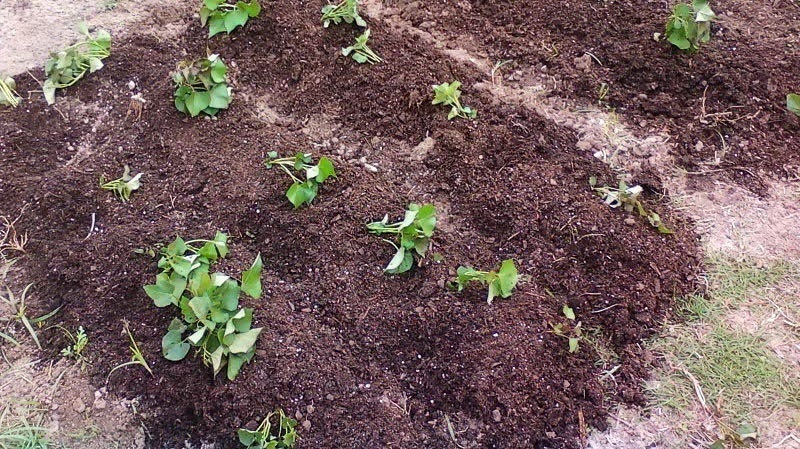
Watering
Once the first few crucial days have passed, you no longer need to water them so heavily. They’ve probably taken root by now and too much water can be detrimental.
About an inch of water every week should be fine. Once they’ve taken root, sweet potato plants can tolerate dry soil surprisingly well. Try to keep them moist but avoid flooding them.
Important: Make sure to give your sweet potato plants a breather the last 3 or so weeks before harvesting. Watering in that period can cause the mature tubing to split. That can seriously affect your harvest!
Fertilizing
A good idea is to put down some compost before you plant the sweet potatoes. It’s usually alright to add fertilizer every month or so (but don’t overdo it!). When choosing your fertilizer, look for one that is high in phosphate.
Tip: Stop fertilizing about the same time you stop watering the sweet potato plants before harvesting. Anywhere from 2 to 4 weeks should be fine, depending on your type of potato/climate combo.
Temperature
Once again, sweet potatoes are really sensitive to frost. They do not like the cold and won’t grow in cold temperatures. So, when you plant them outside, you want to wait until the soil temperature has warmed up to around 60°F (around 15°C).
Sweet potato plants need a temperature between 60° and 85° F (15 to 30°C) to grow in the soil. They also require an air temperature of up to 95°F (35°C).
Warning: Don’t plant your sweet potatoes too early in the spring, otherwise, they won’t grow as they should.
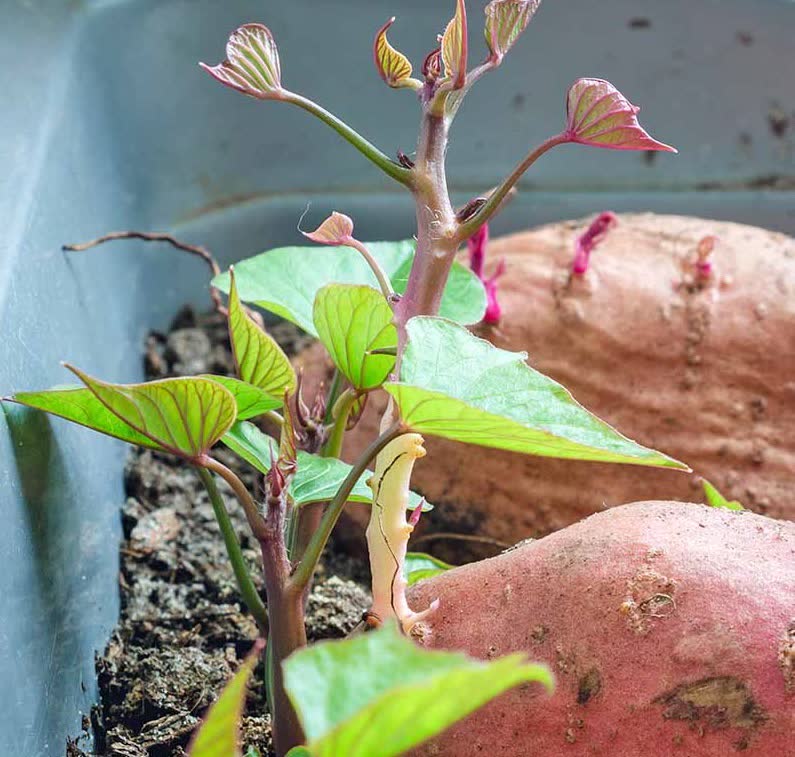
Pests and Diseases
While your potatoes grow, you want to make sure other creatures don’t get to them before you do.
Wireworms, mice, and root-knot nematodes are your most common worries when growing sweet potatoes.
You want to have a soil rich in good microorganisms that discourages the growth of harmful bacteria. You’ll also need some form of pest control, to ward off mice or other above-ground critters.
Tip: Practice crop rotation–don’t plant your sweet potato plants in the same spot each year. This will discourage pests.
Then we have the diseases your sweet potato patch is exposed to—Stem rot, white blisters, and fungal leaf diseases are all common.
You can ward many of these off by ensuring you buy high-quality, certified, disease-free sweet potato slips. As for the rot, you can keep that at bay by not overwatering.
Tip: Hoe the soil occasionally, to ensure that the vines of the plant grow as they should.
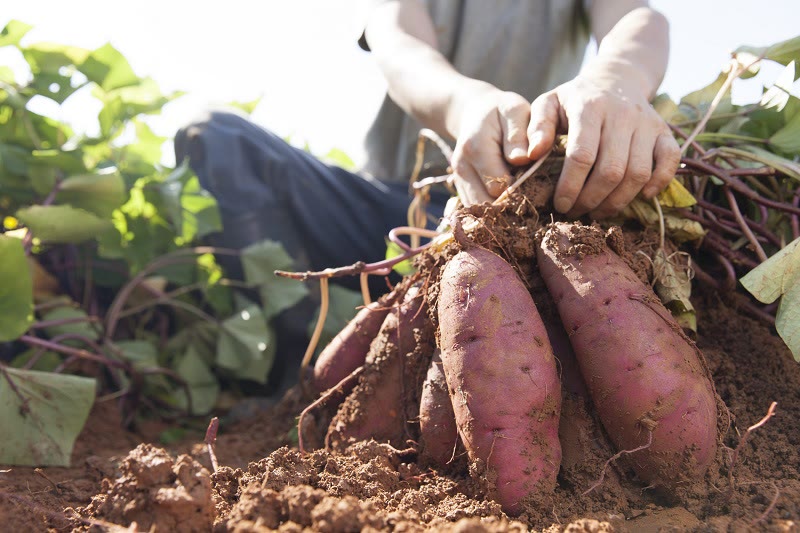
How to Harvest Sweet Potatoes
Usually, sweet potato plants are ready to be harvested once their leaves start to yellow. But you can leave them in the ground for longer, to increase the sweet potatoes vitamin content.
Once you do decide it’s harvest time, here’s how to do it:
- Harvest sweet potatoes on a sunny, dry day.
- Begin digging out the tubers but beware that sweet potato tubers grow close to the surface and are tender. Dig gently!
- Once you’ve properly dug out the tubers, leave them to dry in the sun (up to several hours). Make sure to keep them safe from pests and scroungers.
- After drying the tubers, you want to store them in a well-ventilated, hot area (around 85-90°F/30-35°C) for around two weeks or so.
- After this period, your sweet potatoes have been cured and you can store them a colder place (around 55°F/13°C) with high humidity. If properly tended to, they can be stored for several months.
Sweet Potato Plants FAQ
Can you grow sweet potatoes from a sweet potato?
Yes. Simply get a sweet potato and either cut it in half or in several large chunks. Sprouts will begin growing on your sliced sweet potato. Once the sprout is 5-6 inches tall, remove it gently and plant it.
How many sweet potatoes do you get from one plant?
One sweet potato plant will generally yield at least 1 pound of sweet potatoes or around 10 average-size potatoes. But this varies from plant to plant and from garden to garden.
What is a good companion plant for sweet potatoes?
Most commonly, root vegetables make for excellent sweet potato companions. Beets and roots are good ideas, as are bush beans.
Can I plant a sweet potato from the grocery store?
Of course. You can easily grow slips from store-bought sweet potatoes that will then yield several sweet potato plants. Look for organic sweet potatoes, but any store-bought potatoes should do just fine.
Not Just Potatoes But Sweet Potatoes
Sweet potatoes are easy to grow and really aren’t such a demanding plant—at all! What you need to remember about sweet potato plants is they are sensitive to frost, need space to grow, and love the sun.
With these three things in mind, there’s no reason why this time next year, you shouldn’t have a full sweet potato batch just sitting somewhere in the house, ready for the cooking.

Leave a Reply